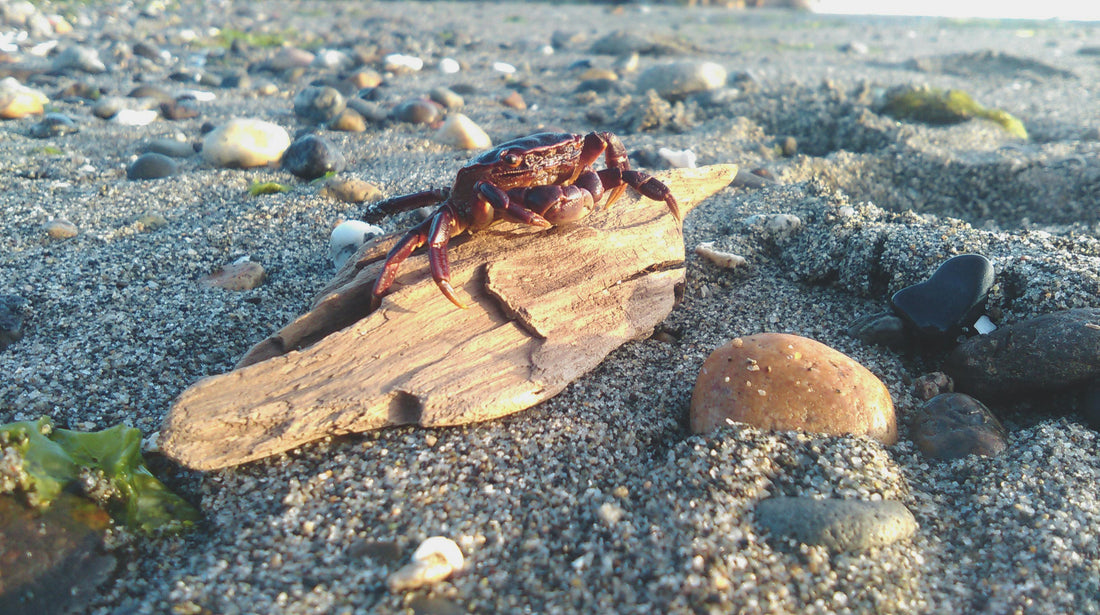Kids are naturally drawn to facts about crabs, and it's easy to see why! Many children have already met crabs at the beach, making these creatures a tangible and exciting part of the natural world. This real-life connection often sparks a deeper interest. Crabs are also incredibly adaptable. Learning about their diverse habitats— from the ocean depths to sandy beaches, and even trees—and how their bodies and behaviors have evolved to survive is both fascinating and educational. Plus, their hard shells and unique scuttling movements offer an engaging sensory experience that kids just love. Continue reading to learn some fun facts about crabs that kids will want to know.

Everything to Know About Crab Anatomy and Behavior
Kids are often captivated by crabs, and it's easy to see why! Their alien-like appearance immediately grabs attention; with hard exoskeletons, multiple legs, and prominent claws, crabs are unlike most animals children encounter. This unique look sparks a sense of wonder and curiosity. Beyond their intriguing appearance, crab behaviors are surprisingly relatable for kids. While being scavengers might seem a bit gross, children find it fascinating to learn about the important role crabs play in their ecosystem. And whether it's understanding basic concepts like their protective shells and pincers or delving into more complex details like the molting process or different larval stages, crabs offer something to engage children of all ages. Children's books about crabs cover lots of fun facts about these fascinating creatures.
Crab Facts Children Will Find Interesting
Crabs look incredibly unique, unlike most animals kids encounter every day. Their hard, armored exoskeletons, multiple jointed legs, and prominent, often oversized claws make them seem almost like something from another planet. This unusual appearance immediately sparks a sense of wonder. Plus, you can often find them in tide pools or aquariums, making them easy to observe firsthand. The basics of crab life, like having a shell and claws and living in water, are simple for even young children to grasp. As they grow, kids can explore more complex details, diving into different species, their intricate life cycles, the specific jobs of their claws, or their role in the ecosystem. There's always something new and interesting to discover about crabs. Kids are absolutely captivated by facts about crabs, and it's easy to see why! Part of it is their natural curiosity, but it's also because crabs are simply fascinating creatures.

(1) Some crabs actually "wear" other living animals on their bodies for protection or to hide from predators.
Take the boxer crab, also known as the pom-pom crab, for instance. It's famous for carrying tiny, stinging sea anemones in its claws, using them like venomous boxing gloves to fend off predators! It's a win-win, as the anemones get to share the crab's meals in this strange but effective partnership. Other crabs might stick sponges, shells, or even small aquatic creatures onto their own shells for camouflage or to deter attackers. Talk about constantly redecorating for survival!
(2) Not all crabs walk sideways.
It's true that crabs are famous for scuttling sideways, and it's how they move most efficiently. But here's a twist: some crabs can walk forward! The colossal Japanese spider crab, known for being the largest crab in the world, is a great example. Its exceptionally long, spindly legs provide a wider range of motion than you'd expect from a typical crab.
(3) Hermit crabs are part of a different scientific group than regular crabs.
Despite looking just like crabs and sharing the name, hermit crabs aren't true crabs at all! They belong to a completely different scientific group than "true crabs." One easy way to tell them apart is by their legs: true crabs usually have four visible pairs for walking, while hermit crabs typically show only three, keeping their fourth pair tiny and tucked away. Surprisingly, hermit crabs are actually closer relatives of creatures like king crabs and squat lobsters!
(4) Crabs smell with both an antennae and a special internal nose.
Crabs have a fascinating way of sniffing out their world! They use their two sets of antennae to detect smells and chemicals in the water. But some, like the blue crab, have an even stranger adaptation: a specialized "internal nose" called a Jacobson's organ tucked away inside their bodies near their eyes. They'll even fold their antennae into tiny holes near their eyes to direct scents right to this hidden organ for processing!
(5) Crabs can regenerate lost limbs.
Crabs have an amazing "escape plan": they can voluntarily shed a limb (a process called autotomy) if it's injured or a predator grabs onto it. They have a special breaking point at the base of their legs, allowing them to detach with minimal blood loss. It's like a built-in safety release! But a lost limb doesn't just magically reappear. Instead, it regenerates during the crab's molting process. After shedding its old exoskeleton, a small version of the lost limb emerges. With each subsequent molt, this new limb grows larger, eventually reaching its full size and function, just like the original.
(6) Some crab species climb trees.
You probably picture crabs scuttling across beaches or the ocean floor, but some species are surprisingly skilled climbers! They've adapted to a semi-terrestrial life, spending their time scrambling up roots and branches. Take the coconut crab, for example. It's the largest land-dwelling arthropod in the world and an incredible climber. These giants scale coconut palms to snip down coconuts, which they then crack open and eat. Amazingly, they can even fall from significant heights without getting hurt! Then there are mangrove tree crabs. As their name suggests, they're experts at navigating the tangled root systems and branches of mangrove trees. They often climb higher with the rising tide, not just to escape predators but also to munch on mangrove leaves. Their natural camouflage helps them blend right in with the tree bark. And it's not just saltwater crabs; some freshwater crabs in rainforests, like those in Madagascar, have also been seen climbing trees and even living in water-filled hollows high in the canopy!




